Reading Time: 16 Minutes
Much of the marketing content we consume online is part of a company’s overall digital strategy. The content aligns with prospects’ needs at each stage of the sales funnel—or at least it should.
If you’re running a business, you should understand the importance of creating this unique content for every stage of the sales funnel to engage leads and convert them into customers. If you’re struggling with this concept, don’t worry. We’ll discuss how you can do just that in this article.
Let’s start by understanding what a customer-centric content strategy is.
A customer-centric content strategy is a way to create, distribute, and manage content relevant to your target audience. It involves understanding your customer’s needs, providing relevant information and resources, and engaging with them on social media.
A customer-centric content strategy should involve content that attracts and retains customers. It is part of a brand’s larger CX strategy (customer experience strategy) that aims to create a stream of customer experiences that are consistent, relevant, and personalized—and which ultimately delivers customer delight, not just customer satisfaction.
A customer-centric content strategy includes several parts:
So, ensure you craft content that speaks directly to the needs and preferences of your target audience, so you can be sure it will resonate with them.

To succeed with content marketing, you must approach it from the customer’s perspective. And that is why a customer-centric approach is critical.
When you adopt a customer-centric approach, you can strike the perfect balance between serving your customers and creating value for your business. It helps you improve customer satisfaction, leading to lower bounce rates and increased conversions over time.
It is a powerful tool that can help you reach your goals. A recent survey found that 88% of marketers had achieved their objectives using content marketing to raise brand awareness and establish credibility and trust.
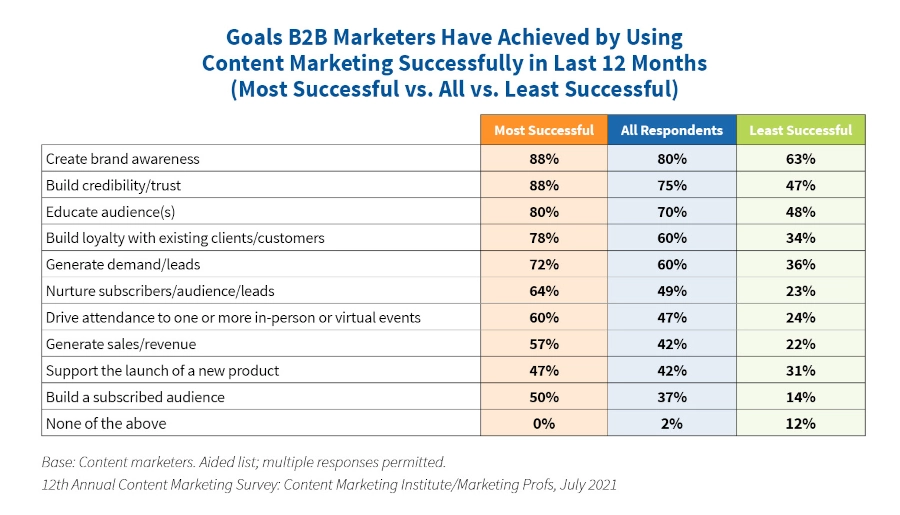
Image via Content Marketing Institute
It also provides new selling opportunities. By creating engaging content that answers questions and solves problems for potential customers, you can increase revenue by upselling products or services they might not have known otherwise.
Lastly, it improves engagement and content quality by offering users more opportunities to connect with your business and gain insights into their interests and needs.
A content marketing funnel is a marketing term that maps a customer’s journey from lead generation to conversion as a customer. The funnel identifies as many leads as possible at the top, takes them through a step-by-step content flow, and converts them into paying customers.
At each stage of the funnel, you lose leads, whether it’s due to competition or lack of interest in your products. The flow is more comprehensive at the top and narrower at the base, hence the marketing funnel.
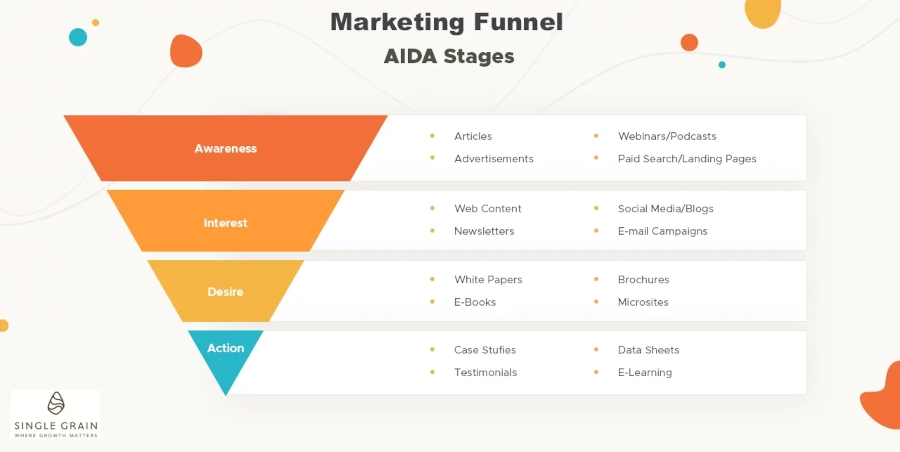
Image via Single Grain
The four stages of the content marketing funnel are awareness, interest, desire, and action. This funnel is also called the AIDA funnel.
Each stage has a specific objective in the customer’s purchase journey, hence the need to create customer-centric content that addresses a specific goal while moving the customer to the next stage and closer to purchase.
A comprehensive customer-centric content marketing strategy addresses the goals at each stage and answers some basic questions:
Let’s now look at how you can create compelling content for each funnel stage.
Customer-centric content marketing is connecting with your customers and helping them find value in your products and services.
But how do you get the most out of a customer-centric strategy? Here are four tips for doing so.
The first step is to generate leads for your brand and bring them into your marketing funnel. The primary objective here is to create awareness about your brand and its offerings.
At this stage, you should identify the problem your products address and resolve and create content around that solution. Your content at the top of the funnel (TOFU) should focus on educating your audience. This stage is ideal for the following types of customer-centric content:
You do not have to create each type of content. Select a few from your content creators or brand ambassadors that align with your brand goals and your lead’s preference. You can then promote these pieces of content across all your digital platforms, including social media and email lists. You can even include links to these content resources on your digital business card.
After promoting the content, check the KPIs to confirm which content pieces are performing the best.
With each piece of content, ask yourself:
Use Google Analytics to measure engagement metrics like view time on each page, the number of reviews garnered, and the bounce rate to assess the effectiveness of each content piece.
Google Analytics is a free and easy-to-use analytics tool that lets you look at your content engagement at a granular level. The results you garner will enable you to make course corrections where required.
You can also use Google Analytics to look at advanced rank tracking that helps you see how your content compares with that of your competition.
Content at the middle of the funnel (MOFU) aims to kindle interest in your leads’ minds. It helps them evaluate whether they need your product or service and understand how it stacks up against the competition.
You’re also trying to build relationships with your leads and earn their trust. You won’t sell anything unless your leads and prospective customers trust your brand and its products.
At this stage, consumers seek content to help them justify choosing your product or service over your competitors. Relevant customer-centric content types at his stage include:
Check out this sample webinar from VWO:
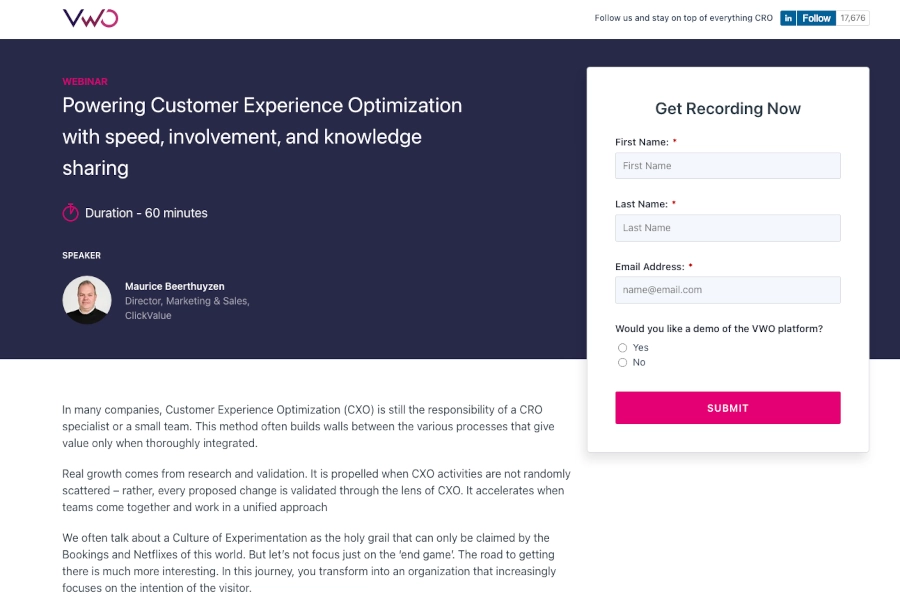
Notice that VWO doesn’t attempt to sell its services in the webinar. At least that isn’t obvious in the webinar title itself. It provides valuable content that entices people to join its sales pipeline.
Thus, which distribution platform you choose to share your interest-based content makes no difference.
However, creating content isn’t the end of the road. You need to check if your content fulfills its intended purpose by measuring the following metrics:
Compelling content has an incremental impact at each funnel stage as it moves the prospect toward conversion and buying your product or service. A helpful tip to remember is not to “actively sell” until you reach the middle of the funnel. Trying to sell too soon will be viewed as hustling, and you will lose the lead.
In a strong sales funnel, the sale doesn’t happen in one go, and often the potential customer needs to consume three to four different content pieces at this stage before they are ready to take action and convert.
At this stage, the lead is aware of your solution and those of your competitors. Hopefully, you have also established a basic level of interaction and trust with your lead. That is the stage where you need to build an emotional connection between your lead and your product.
The content at this stage should amplify the desire to purchase while reinforcing the belief that your product or service provides the best fit for the needs of your leads.
Using video to create customer-centric content is ideal to achieve your desired objectives at this stage of the funnel. Two to three-minute-long videos are often used to recap the previous stages and highlight how your product provides the best solution.
Video and other visual elements help stimulate emotions, and the emotions are often the purchase drivers that trigger the actual purchase. In fact, according to over 80% of marketers, using videos that resonate with customers’ emotional side helps increase conversions and sales.
Some other content types that are relevant at this stage include:
You can also create handy comparison articles to help your audience compare the different options available. This post by Voila Norbert about the best email finder tools is a nice example.
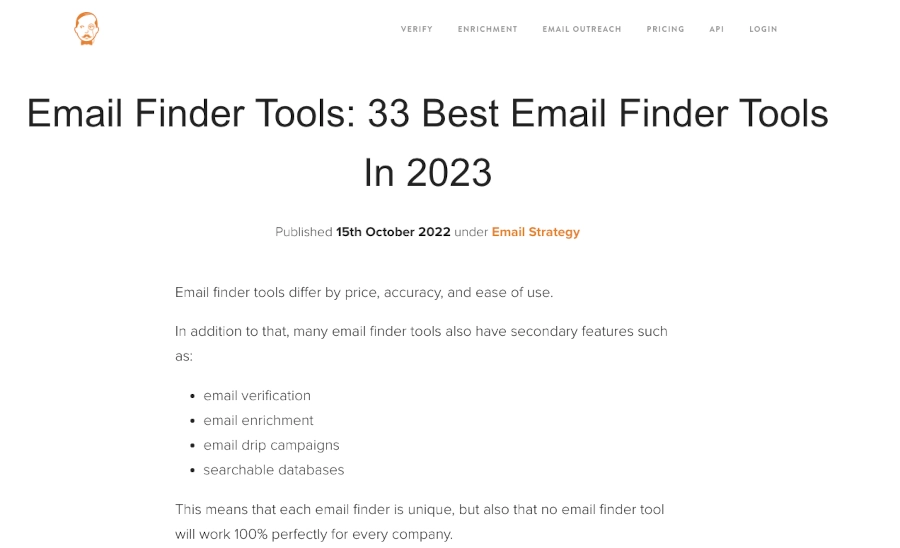
Image via Voila Norbert
The guide helps leads make a decision at a critical juncture in the customer journey.
Pro Tip: Don’t rush this stage. Put out as many different types of content as you can. Sometimes, the lead will come back to this stage’s content bank, and each visit and each piece of content consumed will help convince the potential customer that they are making the right decision.
You can use a content generator like ChatGPT or Ask Writer to quickly reformat content for different channels. Utilizing multiple channels will help you reach a wider audience or increase touchpoints with your existing audience.
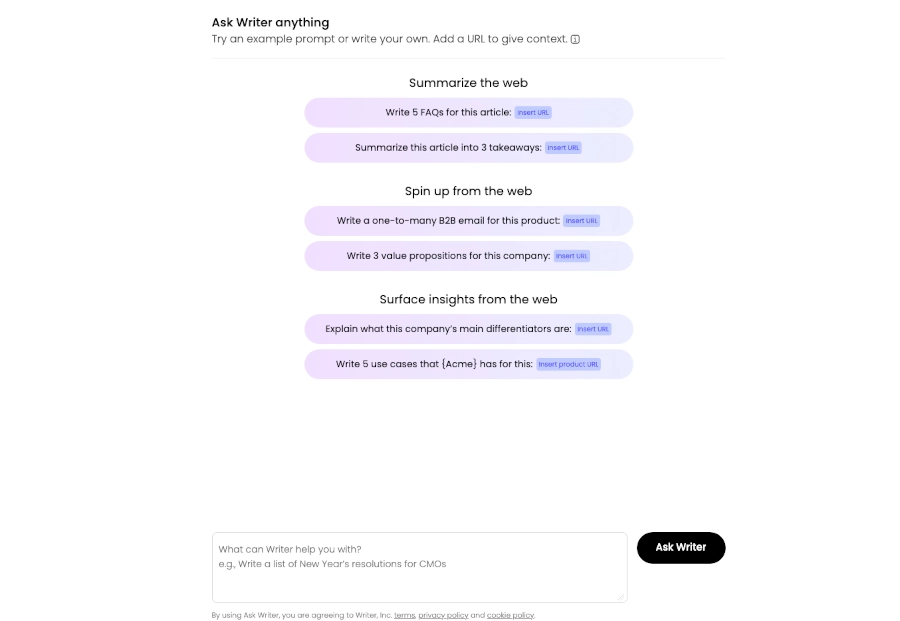
Image via Ask Writer
The action stage is also called BOFU or the bottom of the funnel. This is where the customer pulls the purchase trigger. Content at this stage should focus on reassuring the prospect that they are making a wise, effective, and correct decision in buying your product or service.
Reinforce these benefits with proof of your solutions. That is also an excellent time to talk about purchase triggers like satisfaction and money-back guarantees to overcome the last walls of purchase resistance in the prospect’s mind. When you ask for the sale, the customer feels confident that they have little to lose and everything to gain.
Some typical BOFU customer-centric content types include:
Offering a free trial of your product or service can also lead to a purchase. It’s a popular SaaS marketing strategy. Check out this example from Hulu:

Image via Hulu
The genius part here is that Hulu packages the free trial as a birthday gift. So, in the end, Hulu also earns plus points for being a thoughtful brand.
Once the prospect has tried and liked it, you have a high probability that they will buy into the product at the end of the trial period.
Content is king in the online marketing world. However, far too many companies make the mistake of jumping straight into hard-core selling, which instantly turns the customer off. Instead, companies need to recognize that a purchase decision is a journey that crosses multiple stages.
By aligning your content to your sales funnel, you can walk your prospects effectively through each step of the customer journey.
Good luck in crafting compelling, persuasive content that meets your prospects’ needs at each stage of their purchase journey.
Our team keeps a finger on the pulse, so you’re always working with the latest information.